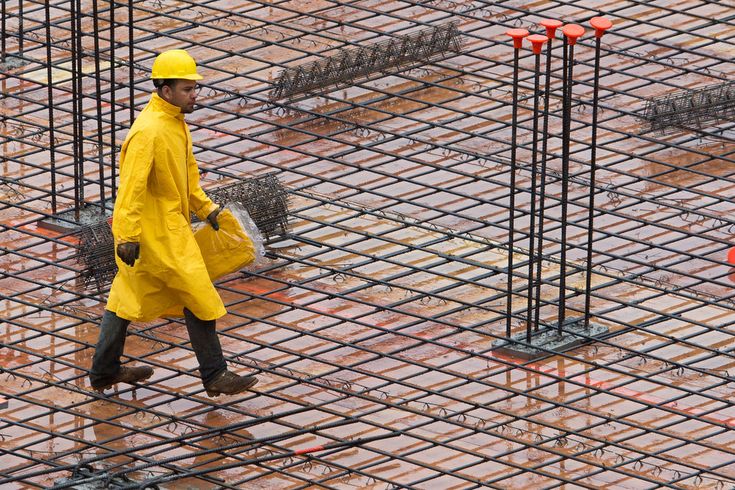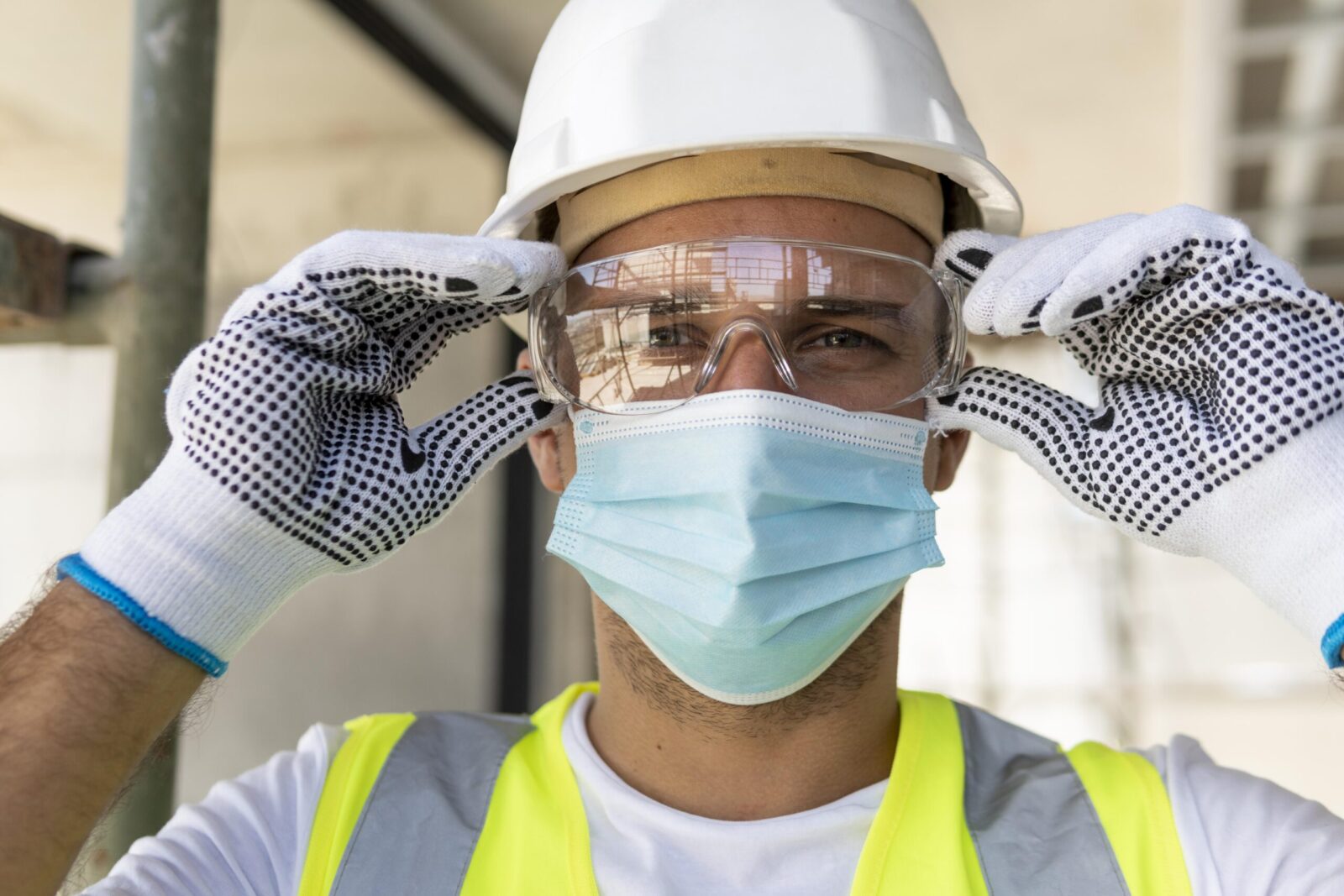
Essential PPE in the Food Industry: What You Need to Know
Overwhelmed by PPE options for food safety? Master your PPE selection for food workers safety with these practical tips.

Get 20€ off on your first order!
Selecting the right rain pants is a common challenge for anyone working or venturing outdoors in wet conditions. Choosing the right material ensures you stay comfortable and protected in any conditions.
This guide not only explores the top materials for rain pants, balancing breathability and waterproofing, but also ensures you leave with the confidence to make an informed purchase.
With our expertise in heavy-duty workwear, we’ll also provide solutions to the next step—pairing your rain pants with the right complementary gear.
For a broader understanding, visit our main article on how to choose the right rain pants.
Rain pants, also known as rain trousers or waterproof pants, are designed to protect against water while allowing airflow to prevent overheating. The material directly impacts their durability, water resistance, and comfort. European work environments often demand gear that meets rigorous safety and quality standards, making material selection even more important.
Key material properties to consider include:
To dive deeper into these technical aspects, explore this Wikipedia article on rain pants.
GORE-TEX is a gold standard for waterproof, breathable materials. Known for its exceptional performance in extreme conditions, it uses a membrane that blocks water while allowing sweat vapor to escape.
Consider GORE-TEX rain pants for activities requiring prolonged exposure to rain, such as outdoor construction or hiking.
PU-coated fabrics are a popular choice for affordable waterproof pants. These materials are made by applying a polyurethane layer to synthetic fabrics like polyester or nylon.
For budget-conscious buyers or occasional use, PU-coated options provide reliable protection. View workwear-grade rain pants to explore these options.
eVent is another high-performance material with superior waterproofing and breathability. Its Direct Venting™ technology ensures sweat vapor is quickly expelled without compromising water resistance.
Opt for eVent when performance and comfort are priorities, especially in humid climates.
PVC is widely used in industrial rain gear for its affordability, robust waterproofing, and excellent resistance to chemicals and abrasion. While it may not offer breathability, its durable properties make it a reliable choice for static or heavy-duty tasks.
PVC rain pants are perfect for heavy-duty work in environments where breathability isn’t a concern, such as fishing or chemical handling.
Nylon with a DWR coating is lightweight and offers moderate waterproofing and breathability. It’s a versatile material suitable for mild to moderate rain.
This is an excellent choice for light outdoor activities or as packable rain gear.
| Material | Waterproof Rating (mm) | Breathability (g/m²/day) | Best Use Case |
| GORE-TEX | 20,000+ | 25,000+ | Extreme conditions, all-day wear |
| PU-Coated Fabrics | 5,000–15,000 | Moderate | Budget-friendly, occasional use |
| eVent | 20,000+ | 30,000+ | High-performance, humid climates |
| PVC | Fully waterproof | None | Industrial, heavy-duty tasks |
| Nylon + DWR Coating | 5,000–10,000 | Moderate | Lightweight, packable rain gear |

When working in demanding environments, look for rain pants with reinforced knees and seams. These features extend the lifespan of your gear, especially for work pants designed for construction or industrial use. Check out our guide on how to choose the right work pants.
Rain pants are often layered over regular clothing. Materials with added stretch or lightweight linings enhance comfort without restricting movement. For cold-weather applications, consider pairing rain pants with winter work pants like these.
With the right guidance, selecting rain pants becomes an easy and rewarding process, ensuring both comfort and value for your investment. Here are some common pitfalls to steer clear of:
Avoiding these pitfalls will help you select rain pants that truly meet your needs, ensuring long-lasting comfort and protection.
Rain pants work best when paired with complementary protective gear. Browse:
Choosing the right rain pants material can transform your experience in wet conditions, ensuring both comfort and durability. By now, you’re equipped with the insights needed to select the perfect balance of waterproofing and breathability for your specific needs. Ready to take the next step? Visit our main rain pants buying guide for deeper insights or explore our curated rain pants collection featuring trusted brands for every requirement.
Looking to complete your gear setup? Discover complementary products like work jackets and winter work pants to stay protected in any weather. With the right gear, you can confidently face whatever the elements throw your way.
To extend the lifespan of your rain pants, follow the care instructions provided by the manufacturer. Generally, most rain pants can be cleaned by wiping with a damp cloth or washing on a gentle cycle with mild detergent. Avoid fabric softeners and high heat when drying, as these can damage waterproof coatings.
Yes, minor damages like small tears or worn areas can often be repaired using waterproof repair tape or patches. For GORE-TEX or similar high-performance materials, some brands offer repair kits designed to maintain waterproof integrity.
While rain pants provide excellent protection against rain, their suitability depends on the material. For hot and humid conditions, prioritize breathable materials like GORE-TEX or eVent to prevent overheating. In cold or windy conditions, layering with insulated work pants is recommended.
Many rain pants include adjustable features such as elastic waistbands, drawstrings, or Velcro cuffs. These allow for a more secure fit and help keep water out, especially when wearing layers underneath.
Waterproof rain pants have fully sealed seams and materials with high waterproof ratings, making them ideal for heavy rain. Water-resistant pants, on the other hand, repel water but may allow moisture to seep through during prolonged exposure. They are better suited for light rain or drizzly conditions.
Thank you! You've signed up for our newsletter.



















Overwhelmed by PPE options for food safety? Master your PPE selection for food workers safety with these practical tips.

Struggling to maintain clear vision in demanding environments? This guide is here to help. By the end, you’ll know exactly...

Electricians across Europe face unique challenges that require reliable safety glasses to ensure both protection and efficiency. Whether safeguarding against...

Overwhelmed by PPE options for food safety? Master your PPE selection for food workers safety with these practical tips.

Struggling to maintain clear vision in demanding environments? This guide is here to help. By the end, you’ll know exactly...

Electricians across Europe face unique challenges that require reliable safety glasses to ensure both protection and efficiency. Whether safeguarding against...
Get 20€ off on your first order!
Save 30% by buying directly from brands, and get an extra 10€ off orders over €100
Save 30% by buying directly form brands, and get an extra 10€ off orders over €100